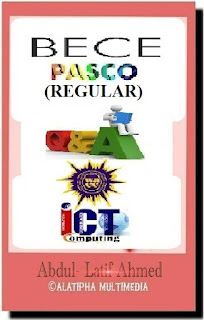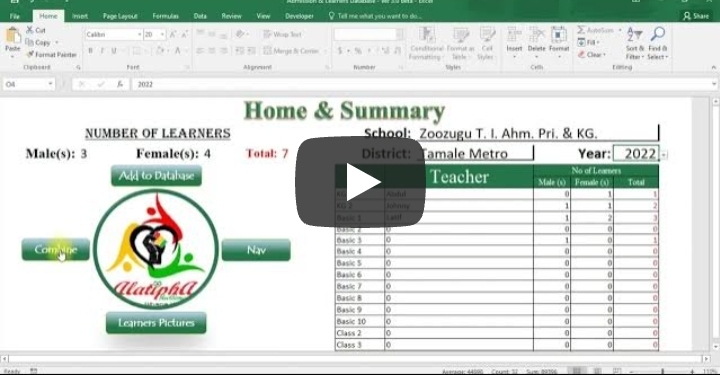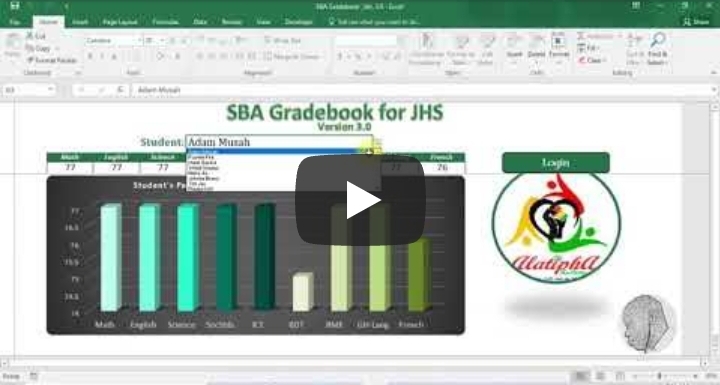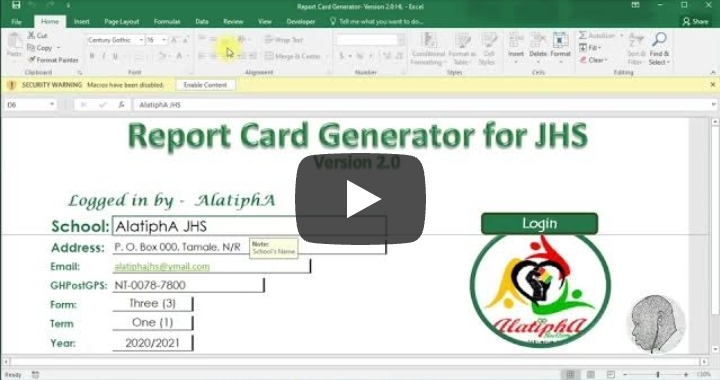History of Anbariya Islamic Institute, Mosque and founder
 |
| Afa Ajura, the founder |
A HISTORY OF ANBARIYA ISLAMIC INSTITUTE, ANBARIYA CENTRAL MOSQUE AND SHEIKH YUSUF IBN SUALIH IBN ABDALLAH IBN SUALIH IBN ABDALLAH (AFA AJURA)
In the name of Allah, The Most Gracious The Most Merciful. Praises and thanks are due to Allah, The Lord of the worlds. May his benedictions and peace be upon his Messenger, Peace be upon him, his household, his companions and all his followers who in righteousness till the end of time.
The leadership of Anbariyya Sunni Community presents its heart felt salutations to the listening public, the media and all those who made this historic event a great deal of success.
Grateful indeed we are to Allah for this feat achieved.
The occasion had the following on agenda:
*The Founder
*The Anbariyya Central Masjid and
*The Anbariyya Islamic Institute
THE FOUNDER OF THE ANBARIYA SUNNI COMMUNITY
This encapsulates his person, early life, learning and missionary work.
Afa Ajura was born Yusuf Ibn Sualih Ibn Abdallah Ibn Sualih Ibn Abadallah.
He was given birth to in a town called Ajura in the Brong Ahafo Region of the Republic of Ghana.
The name Afa Ajura, is a title behind his history of birth, because his parents had settled in Ajura and gave birth to him there in the year 1910.
His naming ceremony was later held in Savelugu, as his parents did not want to name him outside their home town.
He was named Yusuf in the said event at Savelugu. However, his official name is Yusuf Ibn Sualih Ibn Abdallah Ibn Sualih Ibn Abdallah.
His birth year coincided with the year that Savelugu Naa Piegula (Savelugu NaaAbdulai) was deskinned.
HOW DID AFA AJURA LEARN THE QURAN AND SUNNA?
Afa Ajura learnt under the tutorship of Afa Aliru Sabare, then from him to Afa Aliru Kumbungu. His next stop was at Kedjebi where he spent quite a long-time learning before moving to Kumasi.
At Kedjebi in the Volta region of Ghana, he was mentored by Afa Imoro Karachi.
In Kumasi, Afa Ajura assessed his teachers to see who amongst them led his life according to the knowledge they had and the sermons they delivered.
He eventually decided to study under one Mallam Gadal, a Fulani man by tribe.
He proceeded to Nsawam to learn from Alhaji Shamsudeen.
His next destination was Accra, where he studied under Mallam Suraka, Mallam Marhaba, Mallam Hamza among a list of learned Islamic clerics.
The current leader of Anbariyya Shaikh Saeed Abubakar Zakaria happened to study together with Mallam Mahmood Gadal (son of Mallam Gadal one of Afa Ajura’s pioneering Mallams) at the Islamic University of Madina, Saudi Arabia.
Afa Ajura eventually returned to Kedjebi and learnt the art of weaving hats.
Afterwards he moved from Kedjebi to Tamale to give back to society after his long journey in search of Islamic knowledge.
MISSIONARY WORKS OF AFA AJURA
When he returned to Tamale, there was no mosque in his vicinity save a wooden structured mosque by Mba Musah in which people prayed.
Afa Ajura was appointed Imam of a mosque where he led the five daily prayers.
One day, this great scholar, Sheikh Yusuf Sualih Ajura asked Afa Sumani his assistant Imam then if it was possible to have a school for children in the mosque.
Afa Sumani consented and learning commenced in the masjid shortly after his proposal was accepted.
Afa Sumani gathered many people including; Mba Aminu, Mba Yiri, Mba Mikaela, Mr. Iddrisu Salamba, and Mba Nam among others.
Sheikh Yusuf Sualih (Afa Ajura) demonstrated great humility when he met them.
He told Afa Sumani that he wanted to sit with these men so that they could remind one another about the teachings and learning of Islam and Islamic jurisprudence.
Learning commenced until he decided to excuse himself and concentrate on preaching the word of Allah.
He delegated the teaching to the others and went on to spread the message of Islam across the region and the country.
Teaching and learning was entrusted in the hands of Afa Mahama Prang, who had a great passion for the task, solicited support and cooperation from the mallams in the Tamale vicinity.
THE FOUNDATION OF THE ANBARIYYA CENTRAL MOSQUE
The foundation block of the Anbariyya central mosque was laid in the year 1951.
The land was requested from ChogguNaa Mahama and formerly regularized by Mr. Tagoe then leader of the lands commission.
The mosque saw continuation in expansion despite stiff opposition from adversaries of Afa Ajura.
Even under the leadership of Mr. Mensah who came after Mr. Tagoe, the mosque continued to expand.
The first Jumma was staged on 3rd March 1967 in the masjid.
 |
| Afa Ajura's MosqMosin the year 1967 |
There were donations from individual philanthropists which were used to commence the establishment of the mosque and not through Maulid (celebrating the birth of the prophet Muhammad) as purported by others.
THE ANBARIYA ISLAMIC INSTITUTE
The institute started with 17 students. An Arab man had suggested the institute be named Madrasatur-Rashad lil-Arabiya.
This name was rejected and the name Anbariyya was out-doored by Sheikh Sualih Yusuf Ajura.
The current site of the institute was acquired in the year 1969.
SOME EARLIER SCHOLARS OF THE INSTITUTE INCLUDE THE FOLLOWING:
1. An Arab man from Mauritania, Egypt or Morocco?(the nationality is quite debatable).
2. Afa Iddriss (a Gonja by tribe and from Accra and taught for 4years)
3. Afa Hidir(from Wa and spent less than a week due to his inability to cope with situations in Tamale as at then).
4. Sheikh Uthman Rasheed (Spent 5years with the institute).
5. Sheikh Ibrahim Basha (came in 1965 and left in 1968).
6.Sheikh Issah Bello who arrived from Nigeria and stayed with the institute till his death.
Sheikh Abdul Rahman and Sheikh Issah Bello were the pioneering scholars at the current ground of Anbariya in the year 1969.
REBUTTALS
1. It was Afa Anjura who first taught Sheikh Saeed Abubakar Zakaria and not any other Imam as reported by some people.
Regardless, the current leader of the institute was equally taught by other renowned Islamic clerics during his days of seeking knowledge.
2. Anbariya did not flourish with the addition of some six hundred (600) students of Afa Asumah Nyimbung who resided in Kumbung NaaYili.
In fact, the space available at his location could not have contained six hundred (600) students let alone adding same to Anbariya.
3. Afa Ajura’s mosque was not built with funds raised from a supposed Maulid of the prophet Mohammed (S. A. W) or any "Waasan makaranta" as narrated by other people.
4. Afa Ajura was an established scholar before he invited other scholars to assist him.
Afa Ajura has never been an Ahmadist contrary to what is being peddled around.
5. Afa Ajura has never been in possession of any kind of idol hidden in his abode contrary to what is being said by Naysayers.
6. Malam Basha (Doctuur Bayan) only stayed with Afa Ajura’s students as a tutor for only three years and four months.
7. Malam Basha (Doctuur Bayan) never taught Anbariya students in the present location of the institute.
He only did so in the Afa Ajura’s house before the institute moved to its current location.
On this note, the Anbariya Institute would plead with the general public to disregard the half-truths being peddled by some known faces regarding the institute and its leadership.
We stand for peace, development and spiritual growth of all Muslims in Ghana.
May Allah bless all who came to witness the event and keep the Muslim Ummah united.
Assalaamu Alaikum.
 |
| The great Afa Ajura, Sheikh Saeed and other Imams in the late 1980's |

.png)






























Comments
Post a Comment